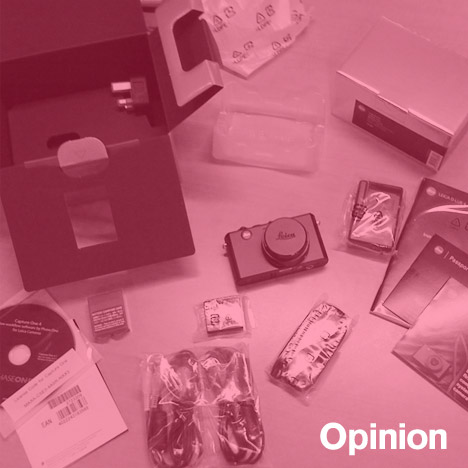
"Unboxing videos represent a form of design criticism"
Opinion: in this week's column, Sam Jacob explains why YouTube movies of consumers ritualistically unpacking their purchases "bring a sharp eye to the designed world".
"Hi my lovelies!" would be a strange opening for a philosophical treatise on human relations with inanimate objects. Perhaps that’s philosophy's loss. It is, on the other hand, exactly how an unboxing video might begin. Unboxing videos have been around a while. Over on YouTube, you’ll find thousands of them: self-made videos of people unwrapping things they’ve just bought.
Here’s the typical format for an unboxing: first we see our protagonist and presenter with a large cardboard box. This will usually have been delivered to their doorstep, though sometimes they have actually been to a shop and lugged the thing home by themselves (imagine!). Then they tell us what it is, why they bought it and sometimes their own personal consumer history with the brand or model in question. Then, slowly, they perform a packaging striptease. Out of the brown shipping carton they reveal the real product-packaging itself. Now it gets serious. In the rigour of the unboxing ceremony, every little thing counts. So this outer skin is scoured for detail: texture, graphics and text are read with intense focus as though carrying out a form of inanimate, cuboid brand-phrenology where every part, every lump, every word and every colour is read for greater significance.
We are then taken deeper, through layer upon layer of wrapping and boxes like unwrapping an onion. Each encounter on this journey to the centre of the box is relayed as though the product in question was a riddle wrapped in a mystery inside an enigma. Instructions, manuals, notes and care instructions are read with portentous relish. Strangely, the product itself often only has a cameo appearance at the end of all this foreplay.
The unboxing video is strange modern phenomenon. It’s a product of available technologies: of cheap digital video cameras, free editing software and the amateur broadcasting enabled by the internet. But it’s more than the sum of its technological parts. It is (isn’t everything?) an expression of the contemporary culture out of which it emerges.
It’s certainly something to do with the way we shop. Changes in the physical act of buying alter our experience and role as consumers. Shopping is increasingly less physical. It’s a click on a jpg rather than a journey to the high street where we can touch, try, press and otherwise examine things. Shops are places where we encounter new possibilities. They are (or were, or just about still are) the portals through which things come into the world. New things, shiny things, desirable things ... all the things!
But internet retail means the point of contact with things has been displaced from the shop counter to the doorstep. The moment of a physical encounter with a product once took place in a public area of the store, amongst other customers and assistants - other humans in other words. Shopping - consuming stuff and buying things - despite its shallow reputation, is a way of participating in the world. The acquisition of things is a deep physiological sensation that makes us feel we are participating in the world. Now that moment takes place in the privacy of your own home, all alone, and it’s this new space between purchase and possession that the unboxing video fills. It's a great return of the encounter with objects, displaced into the strange public/private world of the internet overshare. If we can’t share this moment with someone, we’ll share it with everyone instead.
Unboxing tells us that objects are not singular things in the world, but they are part of much wider networks inhabiting larger spaces of cultural imagination than their own cubic volume. The subjects of unboxing videos are the objects of our most deep desire: technology and fashion. Our fascination with them is deep and unreasonable, verging on the fetishistic. Shiny gadgets and new outfits are the sites onto which we project our fullest consumer psyche, the things that we imagine can extend us, transform us and improve us. Depressingly, unboxing is gendered along very traditional lines: men obsessing over technology, women obsessing over fashion.
As much as they are about consuming, unboxing videos also represent a form of design criticism. Well, criticism might be the wrong term. What I mean is, like design criticism, unboxing provides a commentary on our encounter with things. Of course, unlike traditional design criticism, unboxing happens in realtime. It records the immediate reaction and response to the object rather than a opinion mulled over time and shaped into an argument. It is first-person and super-subjective to the point of obsessive tedium, rather than generalised, objective and phrased for an audience (though of course, with movies sometimes gaining in the region of 20 million views, unboxing has an audience that towers over design criticism). The language of unboxing means you can say "Woo!" and "Yeah!" in ways that even Reyner Banham would have baulked at. Still, for all its amateurism, for all its fannish enthusiasms, unboxing brings a sharp eye to the designed world. It looks closer at fragments of the world on our behalf. However naïve, it witnesses our relationship to objects in its full, unexpurgated banality.
Sam Jacob is a director of architecture practice FAT, professor of architecture at University of Illinois Chicago and director of Night School at the Architectural Association School of Architecture, as well as editing www.strangeharvest.com.